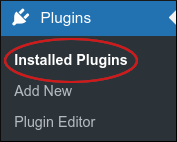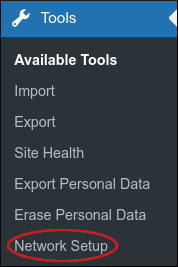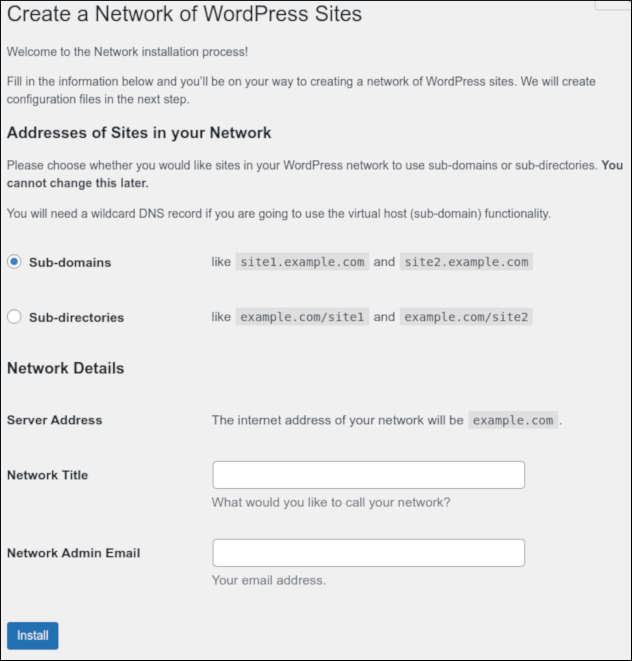How to configure a WordPress multisite network
This article describes how to create and configure a WordPress multisite network. Multisite networks enable you to manage multiple WordPress from one convenient interface.
For example, you may have a main site, a blog, and an online store. Instead of creating three separate WordPress installations for these sites, you can create and manage them from a single location using a multisite network. In a WordPress multisite network, themes and plugins are installed just once, and you can activate them independently for each site. Multisite networks can also help improve overall security, because you only have to maintain and update one site.
Table of Contents
Creating and configuring a multisite network
The following procedure assumes that you have at least one WordPress installation already configured and running. To create and configure a multisite network, follow these steps:
- In the directory where you installed WordPress, use your preferred text editor to open the wp-config.php file.
- Just above the /* “That's all, stop editing! Happy publishing. */ line near the end of the file, paste the following text:
define('WP_ALLOW_MULTISITE', true); - Save your changes to the wp-config.php file.
- Log in to WordPress as the administrator.
Before you can enable multisite, you must temporarily deactivate all of the site's plugins. On the left sidebar, click Plugins, and then click Installed Plugins:

- To select all of the plugins, select the checkbox next to the Plugin heading.
- In the Bulk actions list box select Deactivate, and then click Apply.
On the left sidebar, click Tools, and then click Network Setup:

The Create a Network of WordPress Sites page appears:

Under Addresses of Sites in your Network, select Sub-domains or Sub-directories.
You can only choose one, and you cannot change this setting later. For a subdomain network, all of your sites must have their own subdomain (for example, site1.example.com and site2.example.com). For a subdirectory network, all of your sites must have their own directory beneath the primary domain (for example, example.com/site1 and example.com/site2).- In the Network Title text box, type a name for the WordPress network.
- In the Network Admin Email text box, type a valid e-mail address for the WordPress network administrator.
- Click Install. WordPress generates custom code for your installation to enable the network.
You are now ready to enable the network, but before you do this, you should create a backup of the following files:
- wp-config.php
- .htaccess
To enable the network, copy the custom code blocks into the wp-config.php and .htaccess files.
- The code block for the wp-config.php file must go above the /* “That's all, stop editing! Happy publishing. */ line near the end of the file.
- Replace any existing text in the .htaccess file with the new code block.
- Save your changes to the wp-config.php and .htaccess files.
Log out and then log in again as the WordPress administrator. The new My Sites menu option appears in the top menu bar:

All of your sites in the network appear in this menu, as well as the Network Admin menu. The Network Admin menu contains the following options:
- Dashboard: This option provides an overview of the network.
- Sites: This option shows each site in your network and enables you to manage them.
- Users: This option enables you to manage users for the network.
- Themes: This option enables you to manage themes for the network.
- Plugins: This option enables you to manage plugins for the network.
Remember that you disabled all of the plugins in step 7 above during network creation. Make sure you re-enable the plugins that you want to use on the network.
- Settings: This option enables you to change general settings for the network.
For detailed information about all of these options, please visit https://wordpress.org/support/article/network-admin.To disable the multisite network at any time, follow these steps:
- Use your preferred text editor to open the wp-config.php file, and then remove the text you added in steps 2 and 14.
- Restore the backed up copy of the .htaccess file that you created in step 13.
More Information
- For more information about how to create a multisite network in WordPress, please visit https://wordpress.org/support/article/create-a-network.
- For more information about network administration in WordPress, please visit https://wordpress.org/support/article/network-admin.
Article Details
- Product: All accounts
- Level: Intermediate
Grow Your Web Business
Subscribe to receive weekly cutting edge tips, strategies, and news you need to grow your web business.
No charge. Unsubscribe anytime.
Did you find this article helpful? Then you'll love our support. Experience the A2 Hosting difference today and get a pre-secured, pre-optimized website. Check out our web hosting plans today.